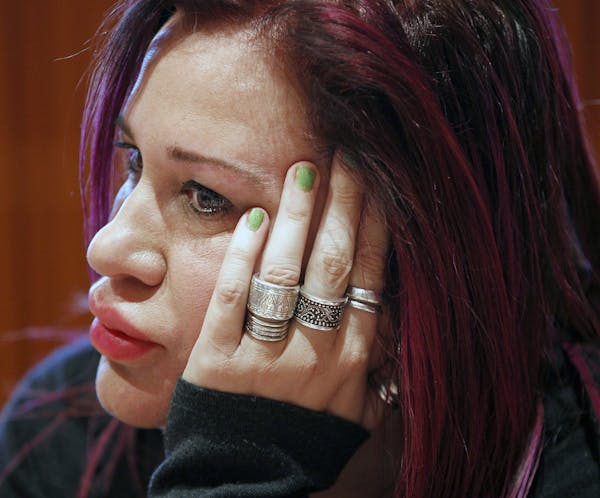The news that radio host Mary Lucia of The Current was taking a leave of absence after being harassed by a stalker brought back unpleasant memories for some other local women in the media.
"I completely sympathize," said Laura Billings Coleman, a St. Paul freelance writer who had a stalker experience when she was a columnist for the Pioneer Press.
Over a three-year period in the early 2000s, she received a series of phone messages, including a threat to burn down her house, from a man she didn't know. She got a restraining order and the caller finally "faded away," but the ordeal left its mark. "It was a very troubling experience," she said. "It can really get into your head."
KARE meteorologist Belinda Jensen endured a similar scenario early in her career in the late 1990s, when a man she didn't know began leaving voicemails and sending letters.
"He started showing up places he knew I'd be," she recalled. Unsettled, she got a restraining order, but the man still appeared at a live show she was doing in Northfield. "It was strange and alarming," she said. "I was pretty freaked out."
The man, who had mental illness, was arrested and later committed suicide. "I feel horrible that this person didn't get help," she said. "That's the sad part."
Unwelcome attention is an occupational hazard for women in the media, according to Jensen and Billings Coleman. "It comes with the territory," Jensen said. "Now, with social media, it's easier for people to find us. ... If you call any female at KARE, they'll have a story."
Such unknown stalkers are less likely to commit violence than stalkers who target former romantic partners, but the experience is still frightening, according to Kristin Kienlen, a Minneapolis forensic psychologist who consults with organizations on threat assessment.
"Stalking victims go through a lot. It's a traumatic event, and there can be intense fear," Kienlen said. She hasn't seen statistics as to how many victims go so far as to leave their jobs, as Lucia did. "But sometimes people have a lot of disruption, even moving out of state when legal intervention is not enough" to escape the harassment.
People in high-profile jobs, such as entertainers and media figures, can become targets for people with "maladaptive" behavior who don't recognize social cues, according to Kienlen. "They might have some kind of grudge because they didn't like something the person said.
Or the stalking can represent deep mental illness.
"There's a delusional disorder where people think they have a special relationship with a public figure," she said.
The key to threat assessment is to determine the stalker's motivation, according to Kienlen. People who are being harassed at work are advised to report it to their company, especially if the threatening behavior is escalating.
For women in the media, determining when a nuisance is a threat can be complicated.
"My phone rang all the time," said Billings Coleman, recalling the critical, insulting and pornographic messages she often received after writing a controversial column. "A lot of it was really abusive. It wears you out and makes it hard to be your authentic self. It's the downside of being female in the public eye."

Minnesota Sports Hall of Fame: A class-by-class list of all members

This retired journalist changed professional wrestling from Mankato

